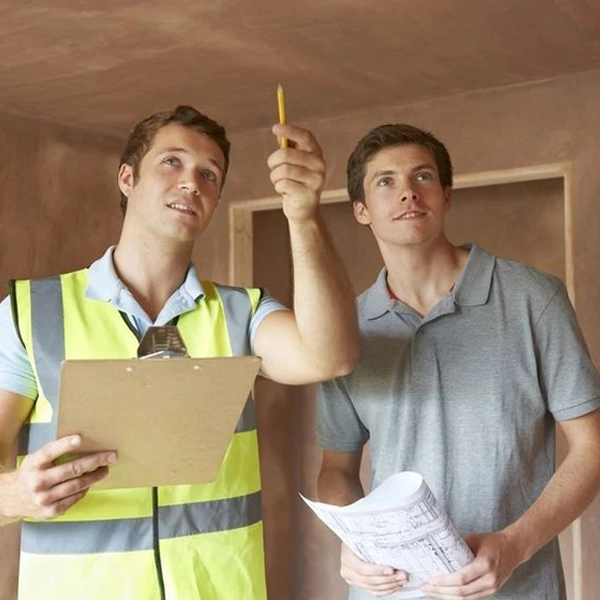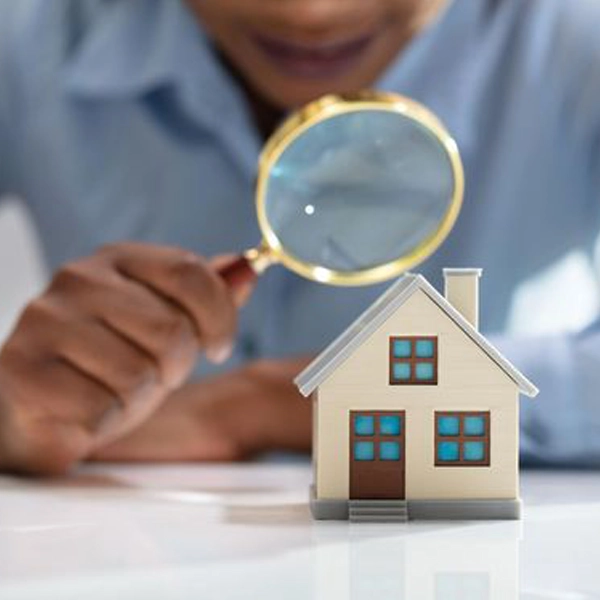What Is Home Maintenance Inspections?

Imagine a world where your home whispers its needs instead of screaming in emergencies. That is the promise of preventive home maintenance inspections. This seemingly simple act can transform your homeownership journey, save money, ensure safety, and grant you peace of mind like never before.
In this guide, you will find a breakdown of what this inspection is, how it differs from standard inspections, what typically happens during one, and more.
What Is a Home Maintenance Inspection?
A (preventive) home maintenance inspection comprehensively assesses a property’s condition. A standard home inspection focuses on potential defects and safety hazards. (Find more info here: what is home inspection?)
However, a maintenance inspection emphasizes the current condition of a home's systems (including electrical, heating, air, and plumbing) and components (including foundation, floors, walls, beams, and columns), and provides recommendations for ongoing upkeep.
This preventive approach to homeownership allows for finding small problems early and avoiding costly repairs down the line.
Maintenance Inspection Vs. Standard Inspection
Among different types of home inspection, these two seem to overlap. But there are some key differences:
- A standard home inspection is mainly required for buyers to understand a property's condition at a specific point in time. A maintenance inspection is for existing homeowners to identify potential issues and maintain the property's value over time.
- Preventive home maintenance inspections often focus on specific systems or areas of concern based on the property age, local climate, or homeowner's needs. standard inspections are more comprehensive and cover all major systems.
- A maintenance inspection report emphasizes preventative maintenance tasks, recommended upgrades, and timelines for addressing issues. A standard inspection report focuses on current issues and needed repairs.

What Are the Benefits of Preventive Maintenance?
Just like the benefits of home inspection, this assessment offers multiple benefits for homeowners. One of the key advantages is financial saving, as it helps reduce repair costs, extend the lifespan of systems, and improve energy efficiency.
Additionally, it increases the safety and security of the building. With a thorough home maintenance inspection checklist, you can reduce the risk of all types of accidents and hazards. At the end of the day, knowing your home is in good working order provides a pleasant comfort. As there are no worries about unexpected breakdowns or emergencies.
When trying to make a sale, maintenance inspections enable fetching a higher price while preventing any related issues when (and after) signing a contract.
Should You Consider This Inspection? And How Often?
If you are a homeowner, regular maintenance inspections can help keep your home in top condition and prevent costly repairs down the road.
If you are a landlord, preventive maintenance inspection ensures the safety and functionality of the property and minimizes the risk of costly repairs.
If you are a potential buyer, this inspection can give you a clear picture of the home's current condition as well as potential maintenance needs.
Realtor says you should conduct this inspection every 3-5 years. But depending on the building’s age, there are other recommended timeframes as well:
- Annually: A yearly home inspection is generally recommended, especially for older homes.
- Every 2-3 years: This is a good timeframe if your home is newer and in good condition.
- As needed: If you are concerned about a particular system or notice any problems, you can schedule an inspection sooner.
Preventive Home Maintenance Inspection Checklist
A home maintenance inspection checklist typically covers:
- Exterior: Roof condition, siding, gutters, drainage, foundation, landscaping, etc.
- Interior: Walls, ceilings, floors, windows, doors, fireplaces, etc.
- HVAC: Heating and cooling systems, air filters, ventilation, etc.
- Plumbing: Water heater, pipes, fixtures, drains, etc.
- Electrical: Wiring, outlets, switches, appliances, etc.
- Appliances: Functionality and condition of major appliances like refrigerator, stove, dishwasher, etc.
How often you need to cover this checklist may vary depending on how big/small the building is, the scope of maintenance inspection, and the overall condition of the home. When hiring qualified inspectors, it is also important how experienced they are.
In general, a basic inspection that covers essential systems might take 1-2 hours for a typical single-family home. On the other hand, a more in-depth inspection could take anywhere from 2-4 hours or longer, especially if there are older systems or potential issues to address.
In both cases, it is important not to rush the process; and when scheduling the preventive home maintenance inspection, ask the inspector for an estimated timeframe so you can plan accordingly.

Conducting a Preventive Home Maintenance Inspection
This inspection should be conducted by certified home inspectors. Some inspectors offer maintenance inspection services in addition to standard inspections.
Or you can hire technicians and contractors who specialize in specific systems (e.g., HVAC, plumbing, electrical) for conducting focused inspections. Nevertheless, here is what you can expect from the inspector:
- Detailed Report: A comprehensive written report outlining the inspector’s findings, any identified issues, and recommendations for repairs or preventative maintenance.
- Explanations and Advice: Making the significance of outlined problems clear and offering advice on how to address them.
- Cost Estimates: Providing estimates for repairs or replacements, though this may vary depending on their services.
Tip: Do not hesitate to ask questions during the home maintenance inspection. Understanding the inspector's findings will help you make informed decisions.
How Much Does It Cost?
Home inspections cost between $400 and $600 on average. However, it may increase if additional services such as radon testing, or mold inspection are required.
To find the best bargains (and services), you can get multiple quotes, check online reviews for certified and qualified professionals, and inquire about payment options. Do not forget to clarify exactly what is included in the home maintenance inspection to ensure you are getting a fair price.
In Conclusion
Preventive home maintenance inspection is a smart investment that pays off in the long run. It protects your home, your wallet, and your peace of mind.
During the inspection, the inspector examines structural integrity, electrical systems, plumbing, HVAC systems, and more to identify any existing issues or potential problems that may require attention or repair.
- In this post:
- What Is a Home Maintenance Inspection?
- What Are the Benefits of Preventive Maintenance?
- Should You Consider This Inspection? And How Often?
- Preventive Home Maintenance Inspection Checklist
- Conducting a Preventive Home Maintenance Inspection
- In Conclusion



